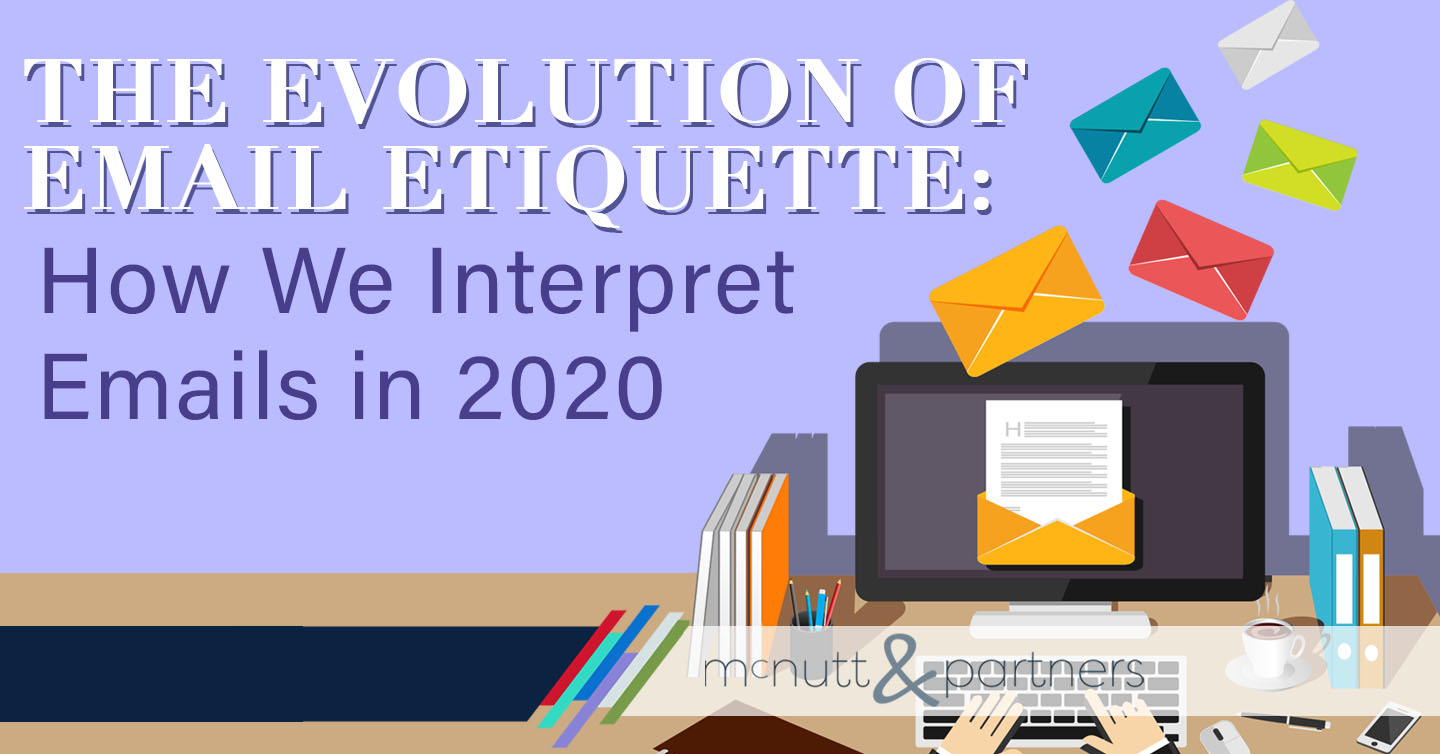The dawn of a new decade is upon us, and that begs time for both reflection into the past and anticipation for what’s to come. Heading into 2020, we’re more connected than the human race has ever been—and most of that is thanks to digital forms of communication, like email. Being that it’s one of the primary ways we talk to one another on a daily basis, email etiquette is a concept that should be acknowledged, especially in a professional setting.
The evolution of email etiquette
As with any technology, the way we use email has evolved as we have become more and more comfortable using it. Ray Thomlinson is credited with having sent the first email (which was not a term that was coined until later) in 1971. Thomlinson said this first message was so forgettable that he does not remember for a fact what it said, but that it was likely some combination of letters like “QWERTYUIOP.”
From then through the end of the 20th century, email use became more and more commonplace. In the ‘80s, it was generally limited to government and military employees, students and academic professionals. Then, the ‘90s opened a world of email possibilities to the masses with the founding of the World Wide Web.
While the @ connector format remains the same from Thomlinson’s first email to today, the context of our emails has progressed. Think about some of the first emails you ever sent. Were they a single incomplete sentence short? Likely. Were they riddled with grammar errors? Maybe. Was your punctuation in all the right places? Probably not. Was your email signature embedded with links to your online assets? Definitely not.
In the early days of email, these faults were far more acceptable than they are heading into the year 2020. Back then, we were all just learning. But now, the way you present yourself in an email—especially in a professional sense—can have a more significant effect on recipients’ impressions of you (and by default, your brand) than you may realize.
Email etiquette for 2020
The nature of today’s email exchanges are held to a higher standard than emails have ever been before. That’s because by now, most of us should be familiar enough with communicating over email to where email etiquette does not go out the window.
In considering how we use email today vs. decades ago, we can glean a few tips for keeping proper email etiquette intact.
Pay attention to timeliness.
Responding in a timely manner to an email is everything—even if it’s just to say that you saw the email and you will provide a more in-depth response later. Our communication via email is quicker than it has been in the past, and therefore people expect quicker responses.
Punctuation and grammar are top priority.
Especially in a professional sense (but honestly in a personal one too), punctuation and grammar affect the impression people get of you when communicating digitally. You don’t have your face to convey emotion otherwise—just the text! Besides making sure grammar is correct, think about the way you’re using punctuation. A message with all periods tends to set a robotic tone. Exclamations warm it up a little, and even throwing an emoji in there here and there can help. Remember, emotion doesn’t convey the same way across the digital landscape as it does over the phone or in person.
Set the appropriate tone.
Part of email etiquette in 2020 is knowing your audience. If you are addressing someone for the first time, your messaging should probably be crafted a bit more formally. If you’re communicating with someone who you email often, feel free to be a bit more casual—as long as you’re still appropriate.
Know when (and when not) to email.
While in the year 2020 we would like to think that everyone is familiar and comfortable with email, it’s not always the case. Know your customers. For example, if you have an older client who gets frustrated with email easily and the point is just not getting across—call him or her. Or conversely, if you know someone who prefers to explain things in written form vs. verbally, then email may be the way to go.
Avoid going overboard.
There’s a term for that—it’s called spam. Don’t spam your email recipients by sending too many messages, too often. If you forgot to say something and need to follow up with a second message, that’s fine, but try not to make a habit of sending multiple, one-thought emails in a row.
Summary
The start of a new decade ushers in all kinds of opportunity to start with a clean slate—or continue the successful slate you already have going for you! As we consider how email has evolved over the last few decades, we can only imagine what we’ll be saying another 10 years from now.
McNutt & Partners is a full-service advertising and digital marketing agency. Contact us today for your marketing needs! Call 334-521-1010, or visit our contact page.

